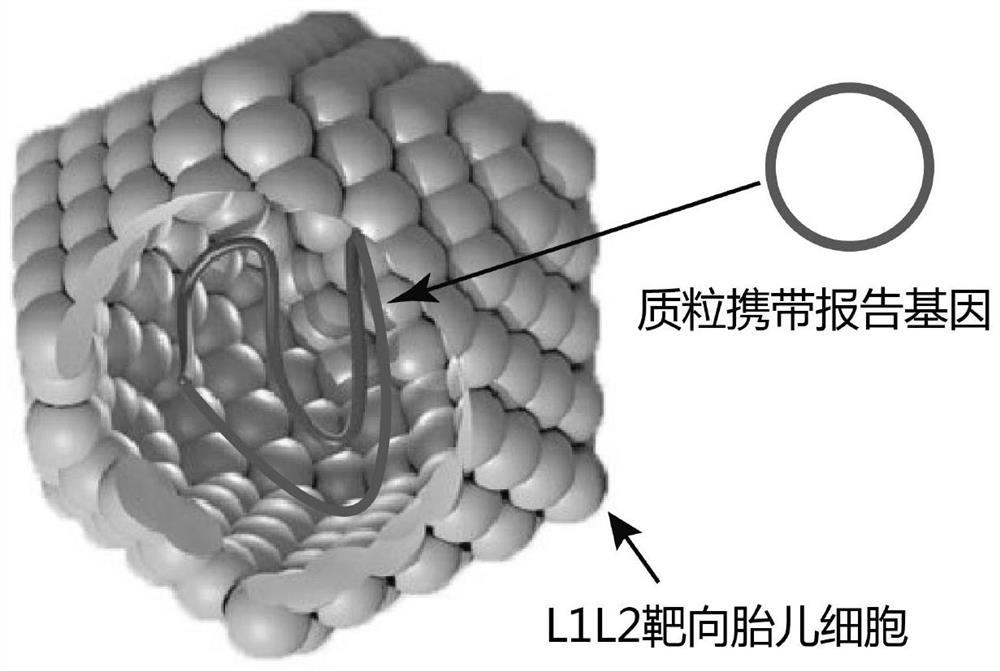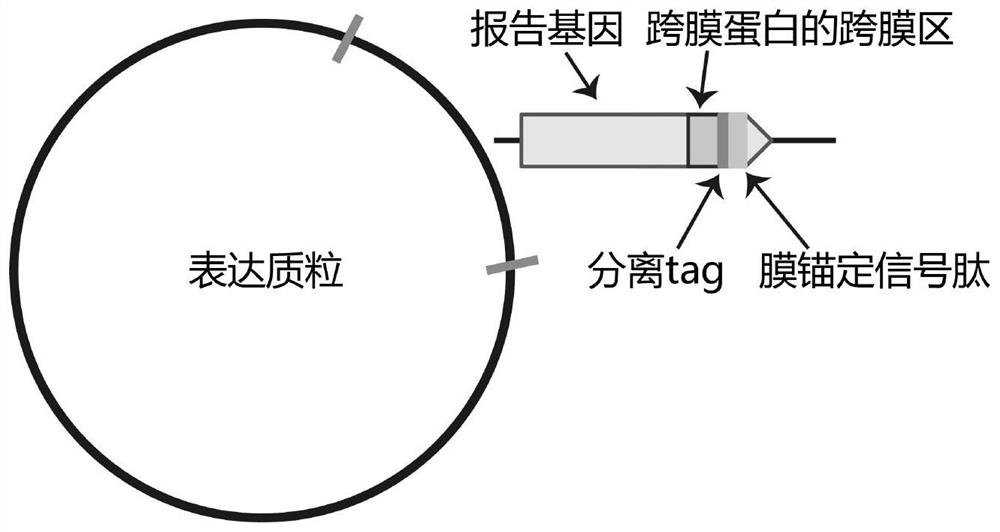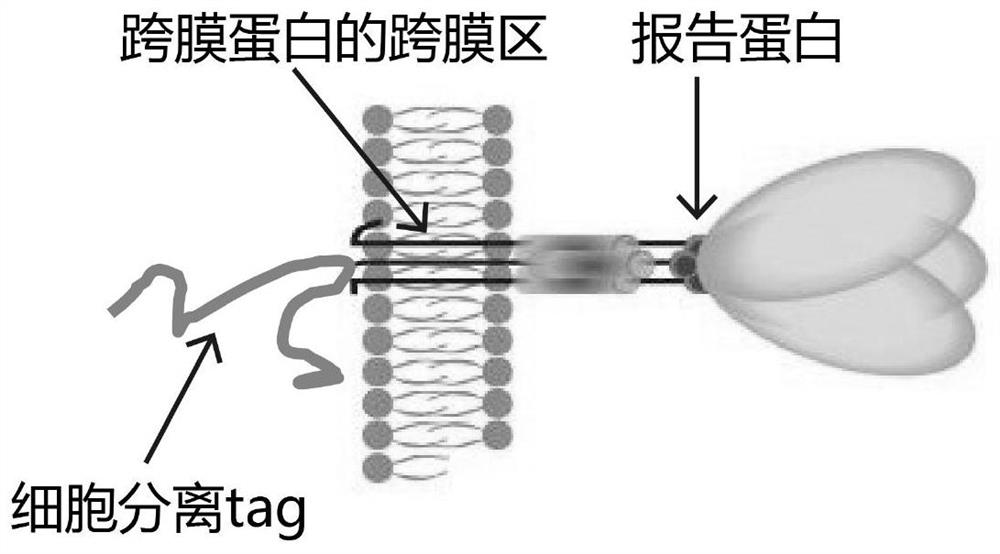Free cell marking and separating probe as well as related product and application thereof
A technology of free cells and cells, applied in the field of biomedicine, can solve problems such as less than 330-380
- Summary
- Abstract
- Description
- Claims
- Application Information
AI Technical Summary
Problems solved by technology
Method used
Image
Examples
Embodiment 1
[0086] Example 1 Preparation of free cell capture probes with the function of displaying green fluorescent protein
[0087] 1. Add 3ml of fetal bovine serum (FBS) to 27ml of DMEM-10 medium (DMEM medium containing 10% fetal bovine serum); make it into DMEM-20 medium, add to 225cm 2 in a glass culture flask (flask).
[0088] 2. Loosen the cap of the flask that was added with the medium, and put it in a 37°C cell culture incubator to balance for 15 minutes; thaw the frozen 293FT cells (Shanghai Pituo Biotechnology Co., Ltd.) in a 37°C water bath.
[0089] 3. Add the thawed 293FT cells to the flask with balanced medium in step 2, and culture for 2-3 days until the cells are full.
[0090] 4. Wash the cells once with 1-2ml of trypsin, then add 1-2ml of trypsin and put it back in the cell culture incubator at 37°C for 7 minutes, and neutralize the trypsin with 9ml of DMEM-10.
[0091] 5.2-5×10 6 The cells were cryopreserved in separate tubes, passaged at a ratio of 1:15 of the ov...
Embodiment 2
[0109] Example 2 Preparation of green fluorescent protein free cell capture probe with cell surface localization function 1. Use human hepatocyte cDNA as template with plasmid, primer 1 in Table 1 as primer, Table 2 and Table 3 as reaction system and The reaction procedure is to amplify the DNA sequence of the SMIM1 gene except the 1-40 amino acid residues in the intracellular part plus the N-terminal signal peptide by PCR reaction.
[0110] Table 1
[0111]
[0112] Table 2
[0113] mixed primer 1μl 2×SYBR mix 10μl human liver cDNA 1μl Sterilized water 8μl
[0114] table 3
[0115]
[0116] 2. Using the plasmid pClneoEGFP as a template, using primer 2 in Table 1 as a primer, and using Table 4 and Table 5 as a reaction system and a reaction program, amplify the DNA sequence of the EGFP gene without the stop codon by PCR reaction.
[0117] Table 4
[0118] mixed primer 1μl 2×SYBR mix 10μl PclneoEGFP plasmid ...
Embodiment 3
[0141] Example 3 Free cell capture probes label fetal trophoblast cells in the peripheral blood of pregnant women
[0142] 1. Use EDTA anticoagulant tubes to draw 10ml of blood from 5 pregnant women who are pregnant with male babies and 5 pregnant women who are pregnant with female babies at 12 weeks; then draw 10ml of blood from 5 non-pregnant women. Take 1×10 3 Cancer cells (female cervical cancer cell lines) derived from epithelial tissue were mixed into the blood of these 5 non-pregnant women; 10ml of blood from each of 5 men was taken and 1×10 3 Cancer cells derived from epithelial tissue (male prostate cancer cell line); after mixing red blood cell lysate with blood volume 1:1, stand at 4°C for 10 minutes (the operation is carried out in a sterile environment) to break the red blood; use 1ml Gently rinse 3 times with DPBS;
[0143] 2. After resuspending with 200 μl of DMEM medium containing 10% fetal bovine serum placed in a 37°C cell culture incubator for 30 minutes, ...
PUM
 Login to View More
Login to View More Abstract
Description
Claims
Application Information
 Login to View More
Login to View More - R&D
- Intellectual Property
- Life Sciences
- Materials
- Tech Scout
- Unparalleled Data Quality
- Higher Quality Content
- 60% Fewer Hallucinations
Browse by: Latest US Patents, China's latest patents, Technical Efficacy Thesaurus, Application Domain, Technology Topic, Popular Technical Reports.
© 2025 PatSnap. All rights reserved.Legal|Privacy policy|Modern Slavery Act Transparency Statement|Sitemap|About US| Contact US: help@patsnap.com



